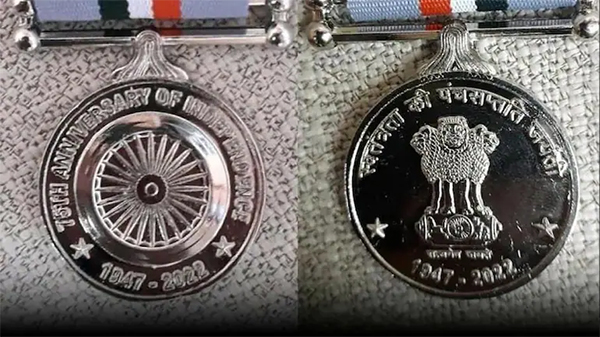On the eve of the 75th Anniversary of India’s Independence it is sobering to recall that India had a total of seven major famines that left 18 million Indians dead in the colonial era. The Colonial regime sucked $45 trillion out of India to fund its industrialisation. Today India is a food grain exporting country. It is the largest producer of milk and vegetables and back to being the fabled land of milk and honey. Look at the Following facts:
• Today, with a GDP of $3.3 trillion, India has overtaken Great Britain to become the fifth largest economy in GDP terms. Going ahead, India is expected to pip Germany in 2027 and Japan in 2029.If you go by PPP terms India is already the third largest economy after US and China.
• To those who feel those are sleight of hand calculations, it may comfort them to note that, by 2030, the Indian economy will be touching close to $10 trillion and will actually be the third largest economy in pure GDP. terms. This quarter, our economy showed a GDP growth rate of an amazing 13.5%. India’s GDP is already at 3.5% of the Global GDP.
• India is the world’s second largest producer of steel and cement and has the second largest textile industry. It is the world’s second largest user of smart phones. It produces the largest number of tractors and two wheelers, the third largest number of trucks and the fourth largest number of cars. It has an industrial output worth $900 billion. Its exports are valued at $670 billion.
• India is the pharmacy of the world and supplies 60% of the world’s drugs and 50% of the vaccines.
• India has the world’s fastest growing stock market. The capex of the Bombay Stock Exchange itself is $3.96 trillion.
• India boasts of an astonishing 237 billionaires! India has the world’s largest and youngest work force. It is the world’s largest provider of services.
• India’s brain power is renowned. 36% of NASA’s work force is Indian, so is
34% of Microsoft’s and 26% of IBM’s. 30% of physicians in US are also Indian.
• India is a major space power. It has launched some 344 satellites of 36 countries and 130 of its own. It has also sent satellites to orbit the Moon and Mars and will be sending up its manned flight next year. It has its own GPS system.
India as a Military Power
India has the world’s second largest Army, the fourth largest Air Force and fifth largest Navy. At $77 billion, it has the world’s third highest defence budget. India is a nuclear power and missile power of consequence. It makes its own ICBMs, IRBMs and TBMs along with supersonic cruise missiles. It is well on its way to making hypersonic missiles. It has demonstrated its ability to shoot down satellites and also incoming ballistic missiles with ABMs. India has produced its own nuclear submarines and aircraft carriers along with destroyers , frigates and corvettes. It is also making its fourth-generation plus fighters, transport aircraft and helicopters. For the Army, it is producing its own tanks, medium artillery, MBRLs and ICVs .
It is one of the most combat tested armed forces having fought five short-duration high-intensity conventional conflicts and near continual counter-insurgency and counter-terrorist campaigns. Its finest hour had come in the 1971 War for the liberation of Bangladesh. In a classic text book, tri-Service campaign, its armies marched 550 kms deep into then East Pakistan on to the enemy capital Dacca, ensured regime change and broke Pakistan in two. The Indian Armed Forces created a new nation state with the force of arms and 93,000 Pakistani soldiers laid down their weapons. It was the largest mass surrender since the Second World War.
Today, the Indian Armed Forces are one of the most respected institutions in the country. They are being subjected to a flurry of major, across the board and sweeping changes. Change is the law of life and change is good. However, too much change in a highly compressed time frame can prove to be de-stabilizing. Such a major churn creates organizational turbulence that can be exploited by an alert enemy. You do not change horses just before a battle, is an old axiom. The Americans say “if something ain’t broke – don’t fix it.” The Indian Armed Forces have delivered victories in all wars that they fought (less one where the politicians let them down). So the sole and primary reason for these major changes and churns is to cut costs – especially of ballooning pension bills. This may not be very advisable at a time of rising external and internal threats. Countries the world over are raising their defence budgets and urgently increasing force levels.
The Russia – Ukraine war should be an eye – opener. This marks a paradigm shift in the levels of lethality of PGMs and casualties in manpower and equipment have become inordinately high. Russia is not short of equipment but is short of manpower and the ill effects of that are clearly showing. Given the lethality of modern weapons and the absolute transparency of the battlefield, surprise is becoming impossible to achieve and the costs in an attack are becoming very prohibitive. Col Jhonson of the Rand Corporation writes, “We are witnessing a pivotal moment in military history – the re-ascendance of Defense over Offense , as the decisive form of war.” We are back to the era of the two World Wars. We need not just high-tech but high-tech and MASS. Cutting manpower or down-sizing can become a very dangerous exercise in such long-duration and very high intensity wars. The Ukraine War is already into its sixth month and no end is in sight. We need to pause and re-think some of our cost-cutting and down-sizing strategies.













